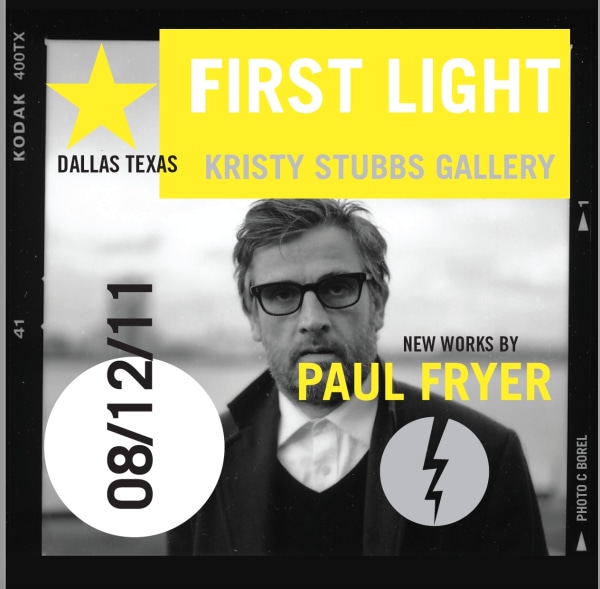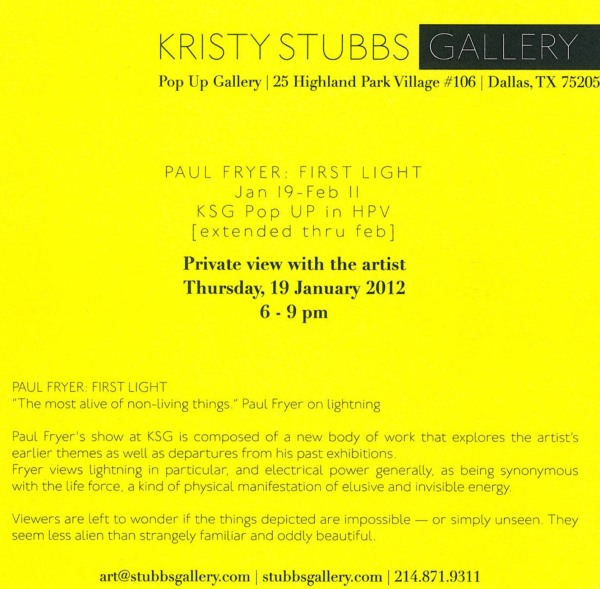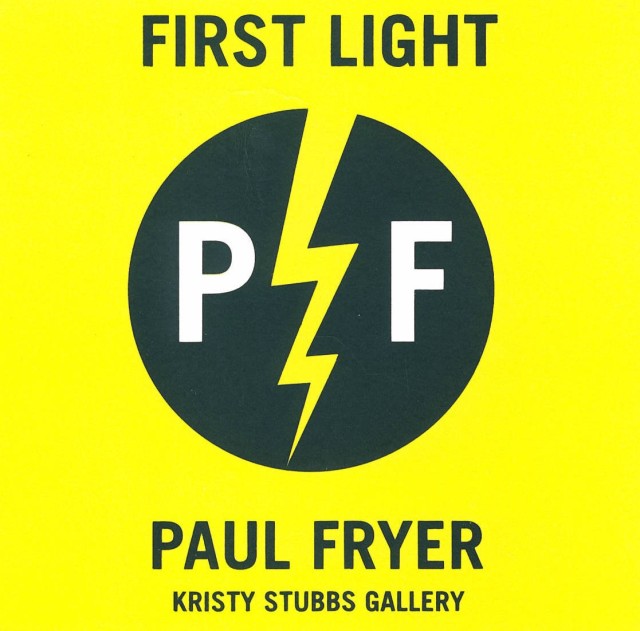PAUL FRYER: FIRST LIGHT | KRISTY STUBBS GALLERY
Opening and Artist Reception Thursday, January 12nd 6:00-9:00PM
25 Highland Park Village, Suite 106
Kristy Stubbs Gallery is pleased to announce the opening of First Light an exhibition of new
works by Paul Fryer.
Paul Fryer's show at KSG is composed of a
new body of work that explores the artist’s
earlier themes as well as departures from
his past exhibitions. It features lenticular*
pictures created in the artist's studio in
London, high-powered lightning flashes
modeled from neon rods, and paintings
that incorporate lit tubes in their
composition. A number of sculptural works
are also in the show, including a wax cast
of the bible with what appears to be a
glowing orb hovering above it.
* (The lenticular printing technique was
developed in the 1930s as a way of making
either 3D or moving images on a flat picture
plane without the use of electrical power or the
need for special glasses. Its main contemporary
use is in luxury advertising. Fryer extensively
researched and mastered the lenticular process
and applies it with subtle approach, thereby
permitting the “impossible” to occur.)
This unique process allows viewers to
witness: a convincingly three-dimensional
egg that hovers above its nest; a lightning
flash captured at the moment it ignites only
to disappear again; a golden girl reclining
on a divan, but dematerializing as the bed
appears in starry space; and an eerily
beautiful red crystal rotating high above
the earth. Viewers are left to wonder if the
things depicted are impossible — or simply
unseen. They seem less alien than
strangely familiar and oddly beautiful.
Fryer views lightning in particular, and
electrical power generally, as being
synonymous with the life force, a kind of
physical manifestation of elusive and
invisible energy. He concludes that it is
effectively “the most alive of non-living
things.” He even notes, “This could crudely
be seen as an idea reminiscent of Shelley,
and I am sure this is not something from
which he would dissociate himself.” Fryer
notes that lightning points to a quest for
understanding; moreover, he sees it as
gentle rather than punitive.
He says, “An open mind invites
inspirations despite the danger. Is the
perfected life a static position to be
achieved by struggle and maintained by
pain — or a journey we all travel until
death, continuing to learn and grow in the
process?” Fryer clearly enjoys the flash-of-
lightning-as-idea, a light of inspiration, and
“a connection with divinity that does not
smite, but illuminates.” He urges us to
understand “that it (the “divine lightning”)
does not judge, but encourages us.” He
also expresses the urgency of the process of
illumination. In fact, he reminds us that
the fragility the earth is manifestly
demanding it.





